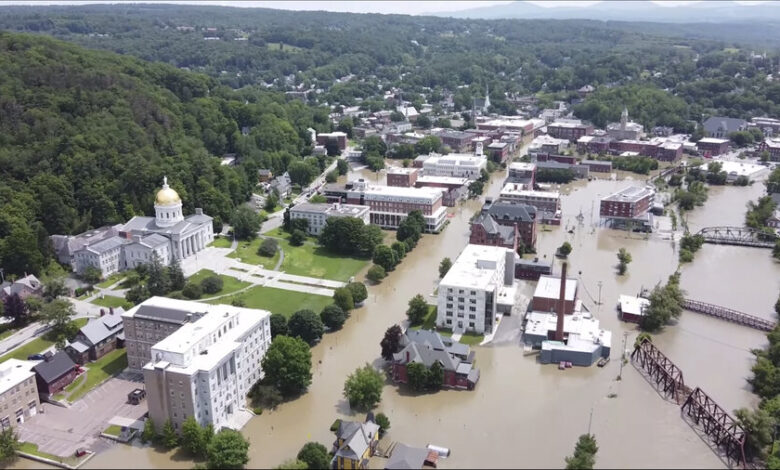Cellular residence parks have been ignored by United States policymakers for many years, however heavier and extra frequent flooding fueled by local weather change is including urgency to efforts to guard them as a key supply of inexpensive housing.
“We merely can’t afford to lose housing items,” mentioned Sue Fillion, planning director in Brattleboro, Vermont, the place floods this month submerged streets within the state capital and revived recollections of a devastating storm dubbed Irene 12 years in the past.
The 2011 storm flooded Brattleboro’s Tri-Park group, which like many cellular residence parks is constructed on flood-prone land that’s usually cheaper and rejected by property builders.
This month’s floods didn’t trigger severe harm at Tri-Park, and officers hope a city and state initiative being funded with COVID-19 aid cash will avert future harm to the group’s 300 houses.
Below the plan, 26 houses will probably be relocated away from a river that runs via the group and rebuilt on larger floor on the location, permitting residents to take care of their property titles.
The challenge is “vastly vital” as a approach to shield residents’ houses and make sure the monetary viability of the group, which operates as a cooperative, mentioned Mary Houghton, a member of the Tri-Park board.
The park’s flood danger plan is now a case examine to see if such a technique may work in different communities, mentioned Stephanie A. Smith, a hazard mitigation officer with the Vermont Emergency Administration company.
Vermont final 12 months created the state’s first environmental justice coverage, highlighting cellular residence parks as disproportionately hit by flooding.
This month’s downpour, which brought on havoc in a lot of the northeastern state, underscored the Tri-Park challenge’s urgency going ahead, mentioned Daniel Ridlehoover, a challenge improvement supervisor with M&S Growth, which is coordinating the initiative.
“I always remind folks we’re making ready a plan for the following occasion, not reacting to the final one,” he advised The Thomson Reuters Basis.
Disproportionate impact
Till now, the heightened flood danger confronted by cellular residence park residents has acquired scant consideration, mentioned Kristin Ok. Smith from Headwaters Economics, a nonprofit analysis group.
“For many years, cellular residence parks have been ignored at each stage of presidency,” she mentioned.
Final 12 months, Ms. Smith and her colleagues carried out analysis that discovered 1 in 7 cellular houses nationally is in a high-risk space – in contrast with 1 in 10 for different housing sorts.
The risk is compounded by the best way most cellular residence parks function, Ms. Smith mentioned, with residents usually proudly owning the house however not the land it sits on – and with upkeep work for sewage and consuming water methods that could possibly be affected by flooding, as an illustration, as much as the park’s proprietor.
After a catastrophe, cellular householders can be uniquely susceptible given how federal help works, mentioned Mr. Ridlehoover, with choices linked to a house’s appraisal worth.





